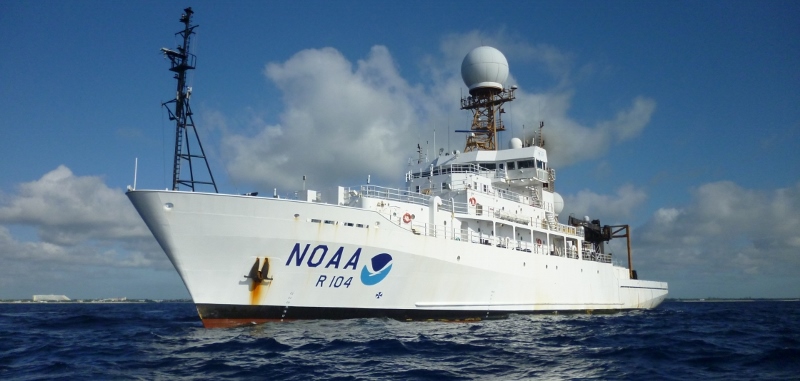The aging U.S. oceanic research fleet is rapidly approaching a point where the fleet could decline by half in the coming decade, according to a National Academies of Science report that calls for renewed investment.
“While the United States’ involvement in ocean observing activities is substantial today, issues related to flat or declining funding and reduced workforce capacity are already causing United States leadership in ocean observations to decline and creating challenges in maintaining long-term, ocean climate observations,” an NAS study committee wrote.
The report titled “Sustaining Ocean Observations to Understand Future Changes in Earth’s Climate,” groups U.S. science needs into three areas of priority: bringing new technology into play, sustaining a scientific workforce for the oceans, and committing resources for ships, satellite systems and other infrastructure, after years of flat or declining funding.
More than climate studies are at risk, the report notes.
“Modern weather forecasting relies on the same satellites and in situ measurements used for observing the ocean for climate. Increasingly, observations of ocean temperatures, patterns of sea surface temperature, and even sea ice extent, are used with models to reliably forecast hurricane intensities and tracks as well as seasonal precipitation and storminess. “
The findings echo other worries of declining U.S. dominance in ocean science, long funded through the U.S. Navy, National Science Foundation, National Oceanic and Atmospheric Administration and NASA. The late Adm. James D. Watkins, former chief of naval operations and co-chair of the U.S. Oceans Commission during the George W. Bush administration, often observed that spending began falling with the end of the Cold War — and its Soviet submarine threat — that had made the Navy a major patron of basic ocean research.
In 2015 the National Research Council reported how the oceanographic fleet was aging, and the new NAS paper reiterates that situation: “The decreasing number of global and ocean class research vessels is creating a shortfall in the infrastructure required for sampling the global ocean and expanding collection into the polar regions.”
“Research vessels are indispensable to the ocean observing system, providing direct observations and deployments of moored and drifting instruments,” the report says. The U.S. fleet of 35 vessels is in the global, ocean and regional classes depending on size, capability and range.
Global and ocean class ships essential for the most distant sustained observing system components are operated by member universities of University-National Oceanographic Laboratory System (UNOLS), a consortium of 14 academic institutions that operate a fleet of 18 vessels constructed and owned by federal agencies.
The largest UNOLS ships, the global class vessels, were built and are owned by the Navy and NSF and most of the operating costs of this fleet are paid by NSF, along with funding from the Navy and NOAA. NOAA operates one global class research vessel, the 274’x52.5’x17’ Ronald H. Brown, launched in 1996.
NOAA has recently planned for building two new “Class A” ships. But critical decisions are needed soon for prioritizing the needs for future science ships, the report says.
Eighteen of the 35 U.S. vessels will be retired by 2030. “This means making funding decisions regarding how many new vessels of each class could be built and which ships could go out of service or be upgraded, while still providing for operation and maintenance of existing ships,” the report says.
New technologies such as remote sensing and autonomous vehicles can extend scientists’ reach into the oceans, but are no substitute for modern ships, the NAS experts caution.
“While new technologies such as autonomous ocean-going vehicles hold promise, ships, and in particular global and ocean class vessels, still will be required to deploy and maintain ocean observing platforms. Establishment of ocean observing sites, such as moored observatories or repeat ship-occupied sampling lines, which require regular visits by ships every year or every decade (and may require long transits) introduce significant demands on the days at sea available each year from the U.S. research fleet.”
“The decreasing number of global and ocean class research vessels is creating a shortfall in the infrastructure required for sampling the global ocean and expanding collection into poorly sampled regions such as the polar seas,” the report states. “Ships require long-term planning and investment, and maintenance of a capable fleet of research vessels is an essential component of the U.S. effort to sustain ocean observing.”





